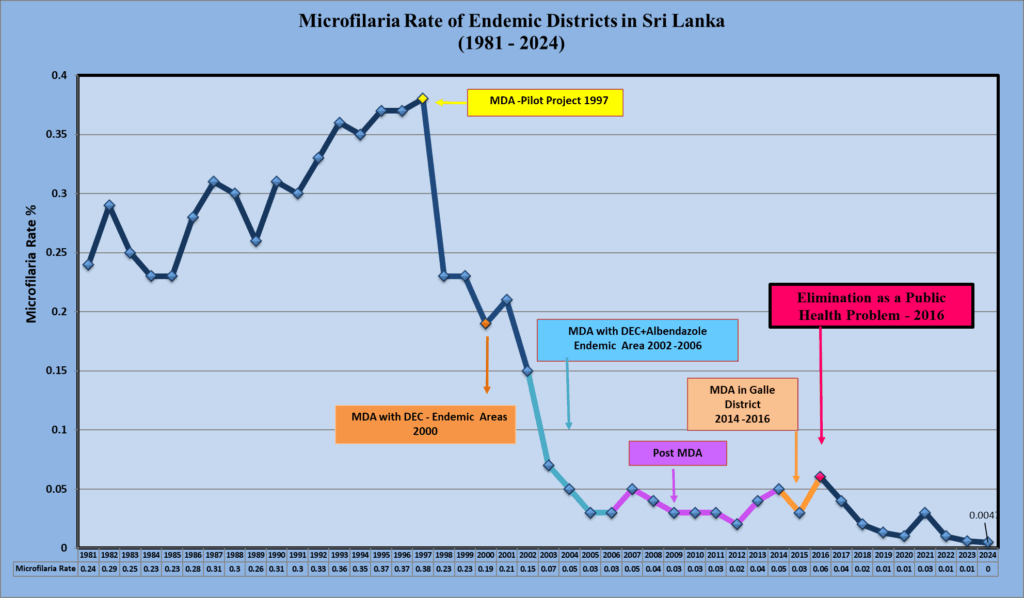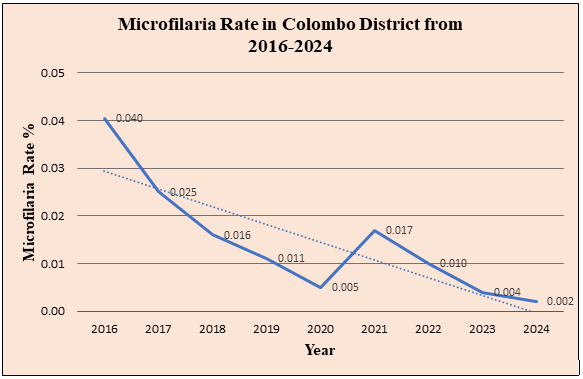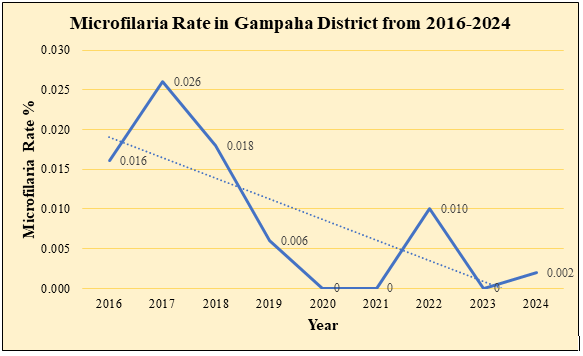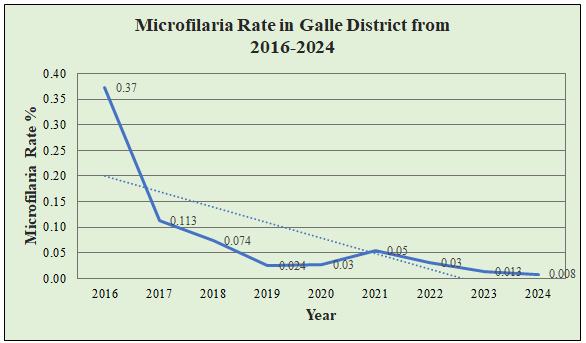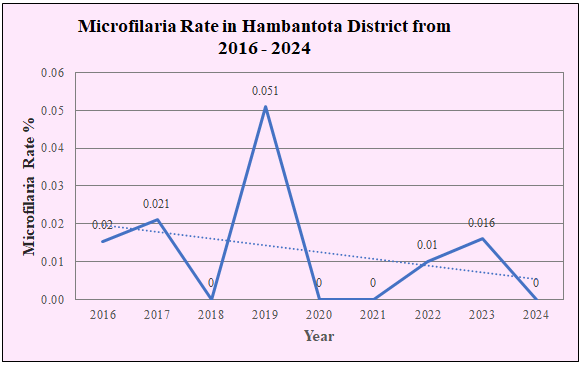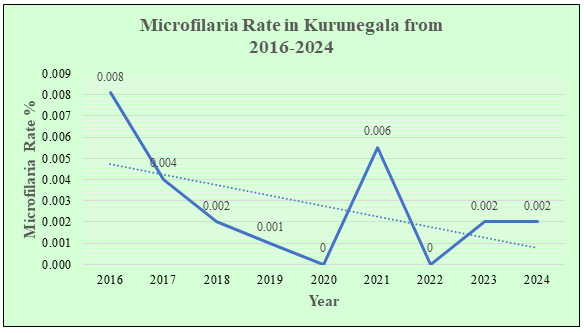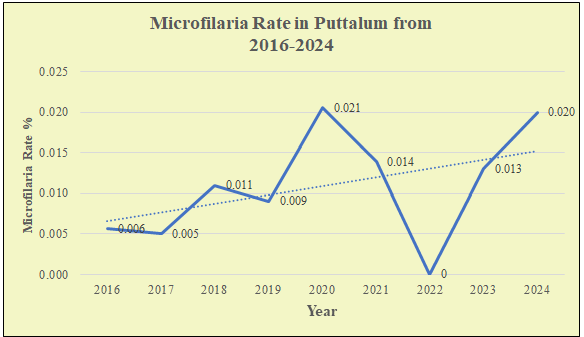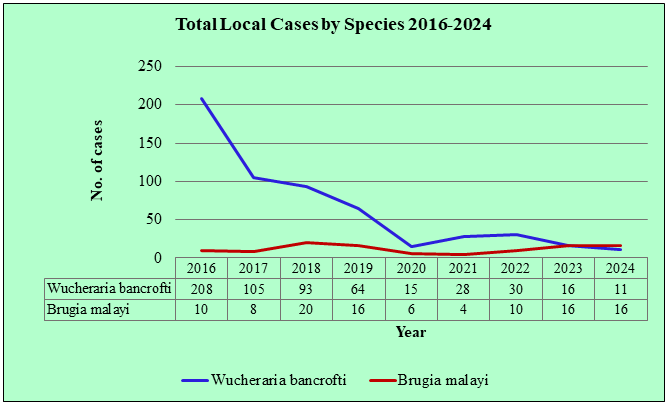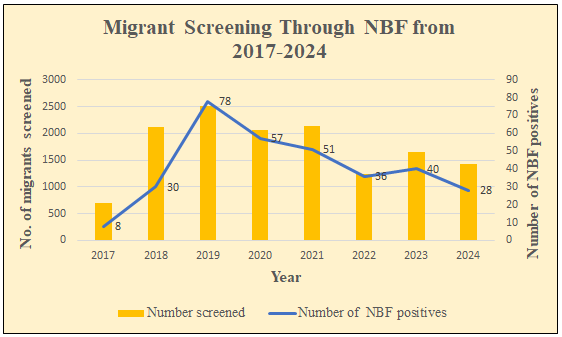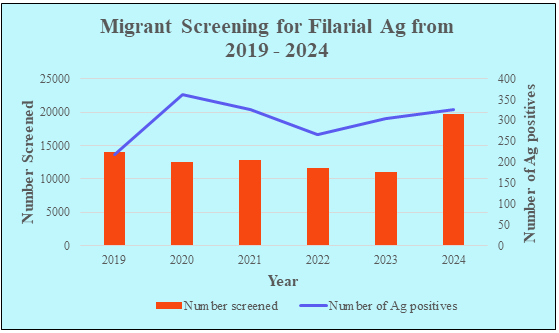The primary method used to identify filaria patients in Sri Lanka is Night Blood Filming (NBF). This involves examining thick blood smear slides under a microscope to detect microfilaria in the blood film. The microfilaria (mf) rate serves as the main indicator and is calculated accordingly:
![]()
The graph illustrates the microfilaria rate (mf) in endemic districts in Sri Lanka from 1981-2024. Throughout this period, the mf rate in the country has consistently remained below<1%. In 1997, the first Mass Drug Administration (MDA) was conducted as a pilot project using Diethylcarbamizine Citrate (DEC). Subsequently, in 2000, another MDA was implemented in endemic areas. From 2002-2006, an MDA was carried out in endemic districts using DEC and Albendazole.
The graph demonstrates a decrease in the mf rate in the country between 2010-2012, following the MDAs. However, there was a temporary increase in the mf rate in 2013 and 2014, primarily due to a higher number of cases reported in the Galle district. As a response, an MDA was conducted in the Galle district by AFC.
Since the 1980s, the mf rate in Sri Lanka has consistently remained below 1%. Consequently, Sri Lanka was recognized by the World Health Organization (WHO) in 2016 as a country that has eliminated lymphatic filariasis as public health problem. After 2016, the mf rate remained below 0.05%, while the mf rate recorded as 0.0047% in 2024.


